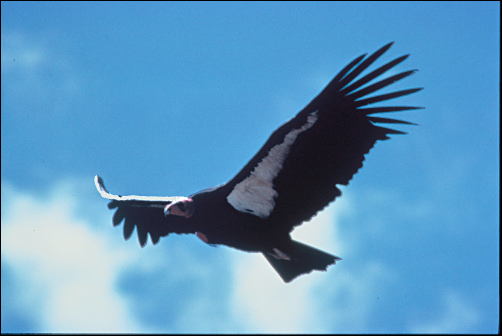
We've all heard of the California Condor and know that it's in trouble. This huge scavenger is, in a sense, a remnant of the ice age; of the time when numerous large herbivores roamed our continent. Amply harassed by a plethora of predators as well as dying from natural causes, these Pleistocene mammoths, horses, camels, bison, and others produced bodies galore; dead meat available for feeding upon by a variety of scavenging birds and mammals.
Twelve thousand years ago, we wouldn't have called this condor a
California Condor—even if there had been a California back then. Fossil remains
are known from New York to Florida and across the Southwest from Texas to Arizona and
California. What now is our Chihuahuan Desert was then home to these huge vultures, for
we know of condor bones from the Big Bend, from the Guadalupe Mountains region of
southeastern New Mexico, and from the Little Hatchet Mountains of southwestern New
Mexico. Then, basking in the company of a widespread assembly of large scavengers; now,
a pitiful remnant of past days of glory. 
Contributor: Arthur H. Harris, Laboratory for Environmental Biology, Centennial Museum, University of Texas at El Paso.
<<p class="three">Desert Diary is a joint production of the Centennial Museum and KTEP National Public Radio at the University of Texas at El Paso.
Adult Condor in flight. Photograph by Noel Snyder, courtesy of the U.S. Fish and Wildlife Service.